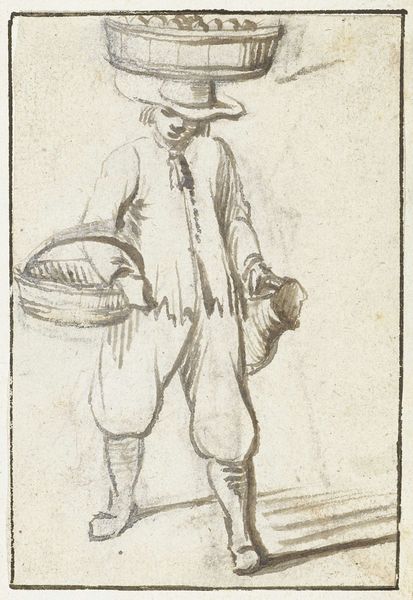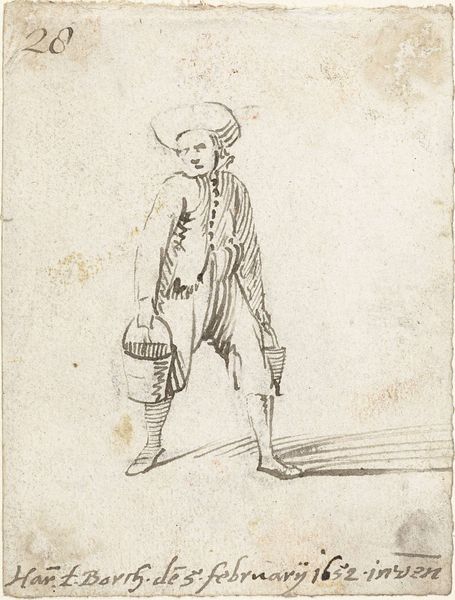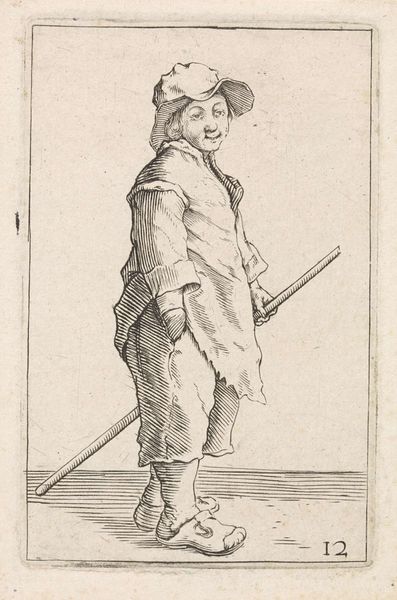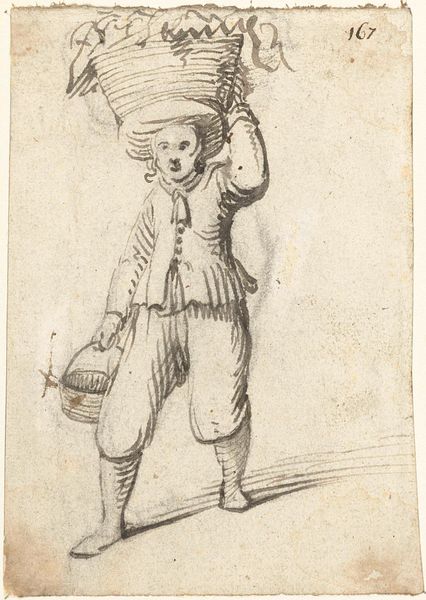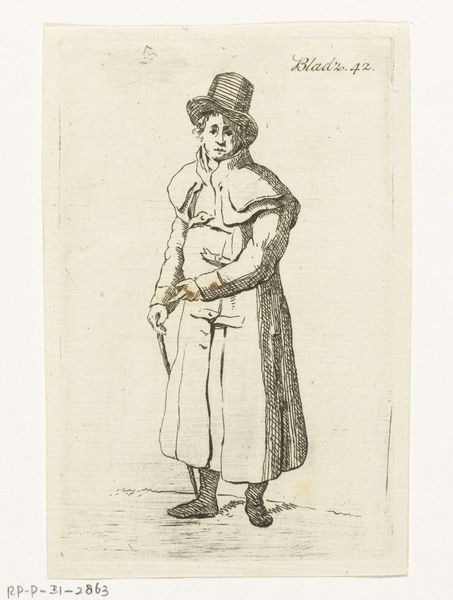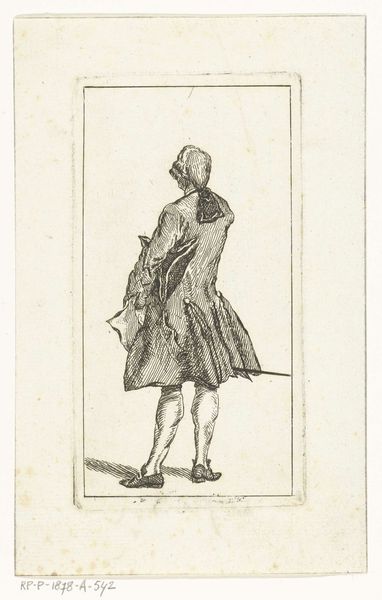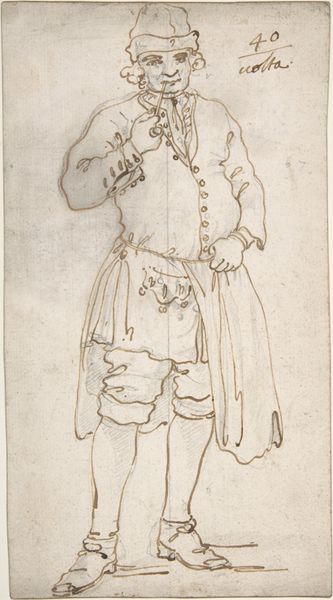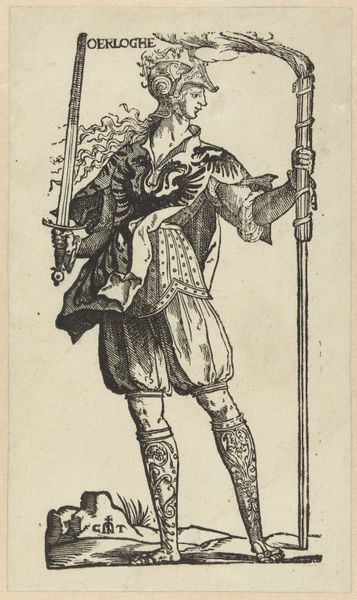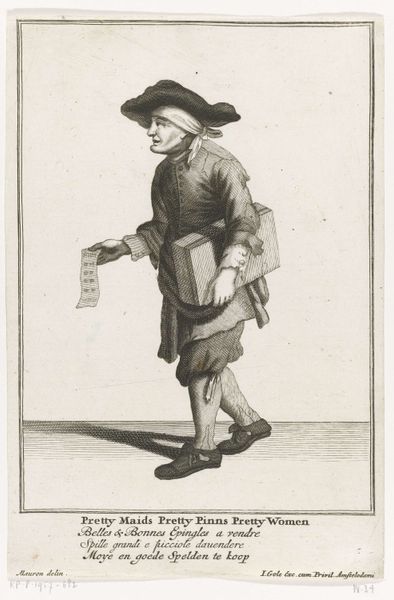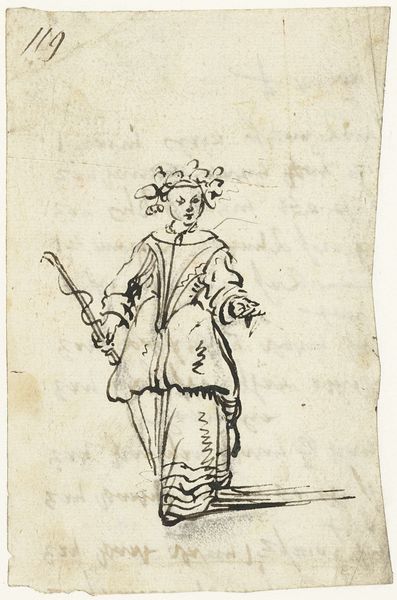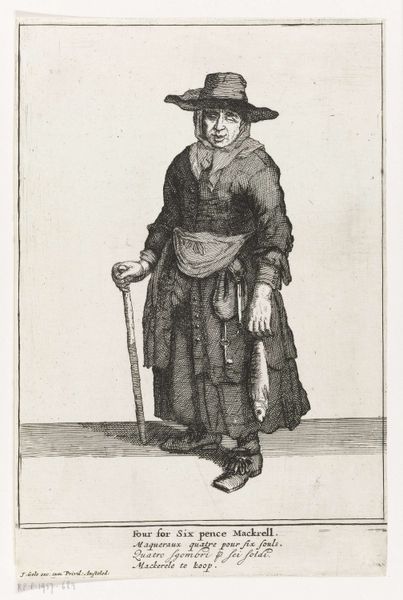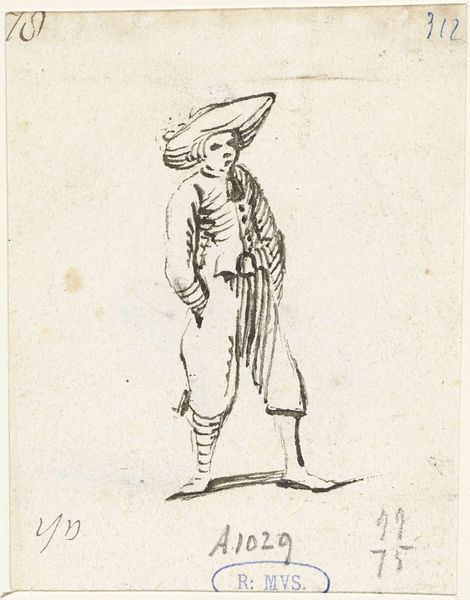
drawing, ink
#
portrait
#
drawing
#
baroque
#
figuration
#
ink
#
genre-painting
Dimensions: height 104 mm, width 78 mm
Copyright: Rijks Museum: Open Domain
Curator: Welcome. Let's examine this delicate drawing currently held here at the Rijksmuseum. Titled "Young Man in a Vest, Front View," it's attributed to Harmen ter Borch and likely dates to 1651. It’s rendered in ink, exhibiting the artist's characteristic economy of line. Editor: My immediate reaction is to its understated elegance. There’s something melancholic, perhaps even a hint of rebellion, in the young man's pose. His hands tucked casually into his pockets give him a nonchalant, almost defiant air. Curator: Precisely. Ter Borch was known for capturing the nuances of Dutch Golden Age society. It is compelling to consider how Ter Borch's social standing and potential access to wealthy patrons may have influenced his inclination to portray these subtle commentaries on class and status. Editor: I am wondering about this individual within that social context. The buttons down the vest suggest a certain level of affluence. But the somewhat undone aspect of the clothing -- those untied ribbons at his knees – hints at a subtle rejection of rigid social norms. This could have been intentional—or just carelessness. Curator: His attire can also reflect a cultural shift away from Spanish dominance. There was a move in that era toward a distinctly Dutch identity, which might have involved a subtle relaxing of formal dress codes. The ink drawings like these helped Ter Borch practice and to explore details for use in larger paintings for wealthy families eager to advertise their social status. Editor: So it became a way of visualizing class aspiration in the mid-17th century, something like look books of today’s influencers. Curator: A fair comparison, yes. It reflected new societal values. People rose in society via commercial or military success. In what may seem to our eyes a loose drawing is a highly nuanced composition which would influence styles. Editor: Thinking about contemporary fashion imagery…it is such an odd sense of privilege in the way he possesses himself in his own body in this image. Ter Borch's ability to invest so much personality in the simplest line continues to be captivating even centuries later. Curator: It makes you consider that the simple art and life in Holland after the treaty with Spain has as much rebellion and change as you’ll see during times of overt warfare. Editor: Exactly, it gives me pause about our times as well.
Comments
No comments
Be the first to comment and join the conversation on the ultimate creative platform.
